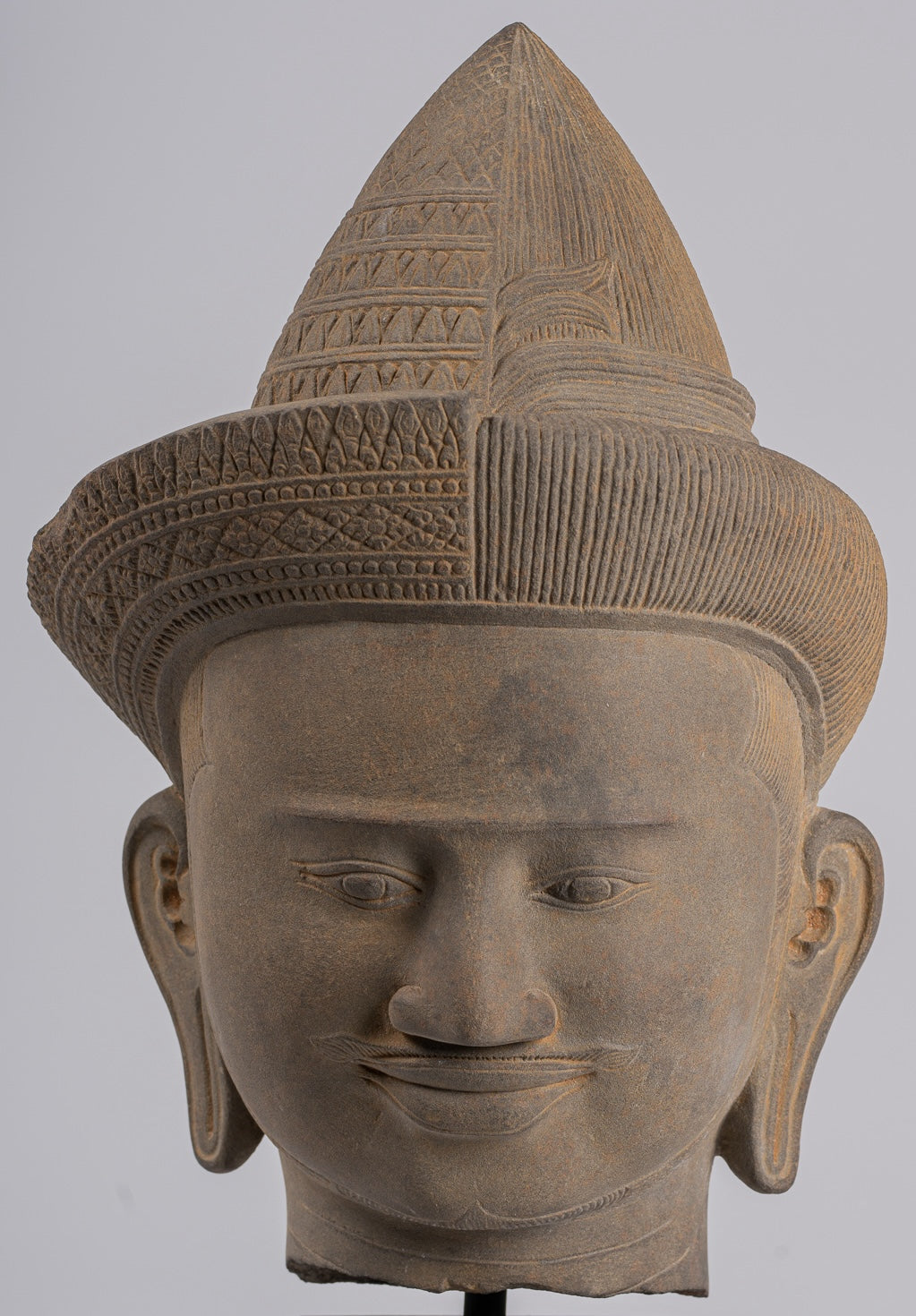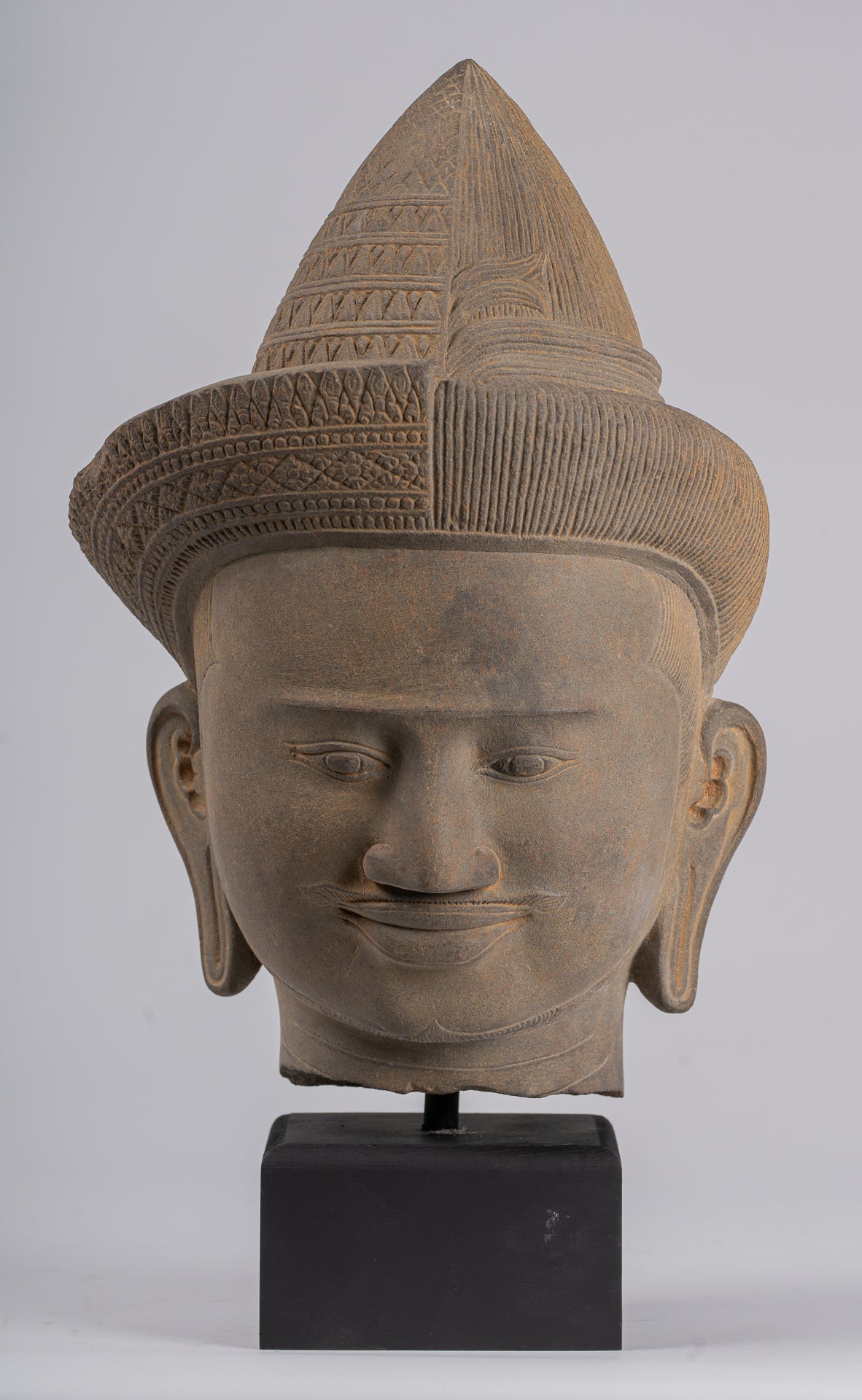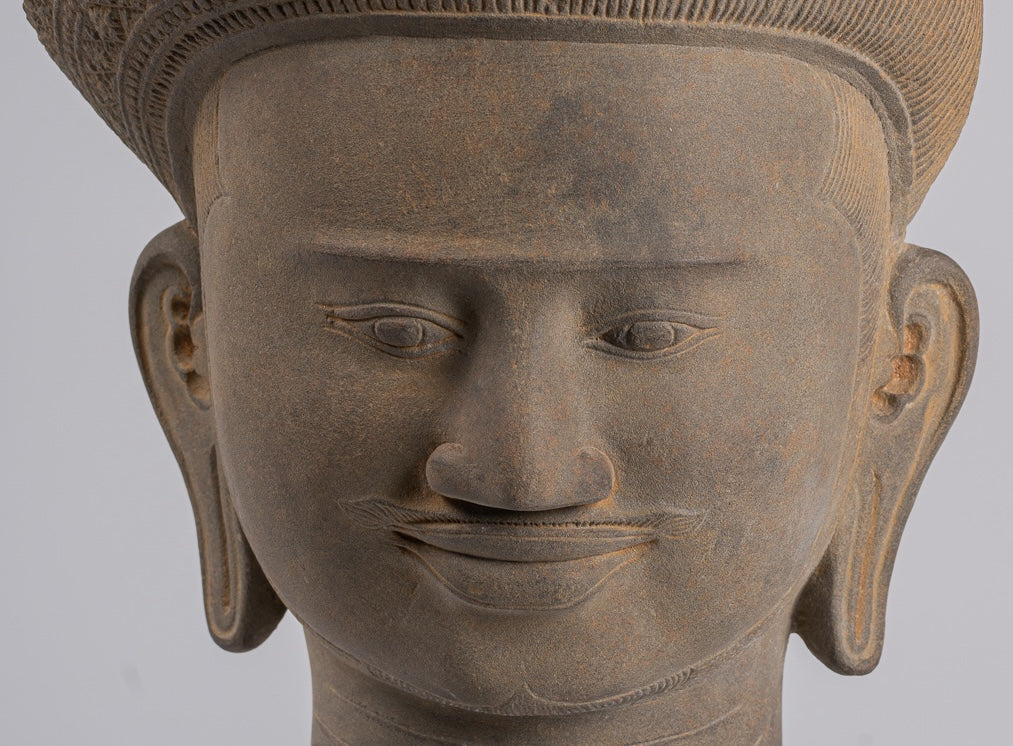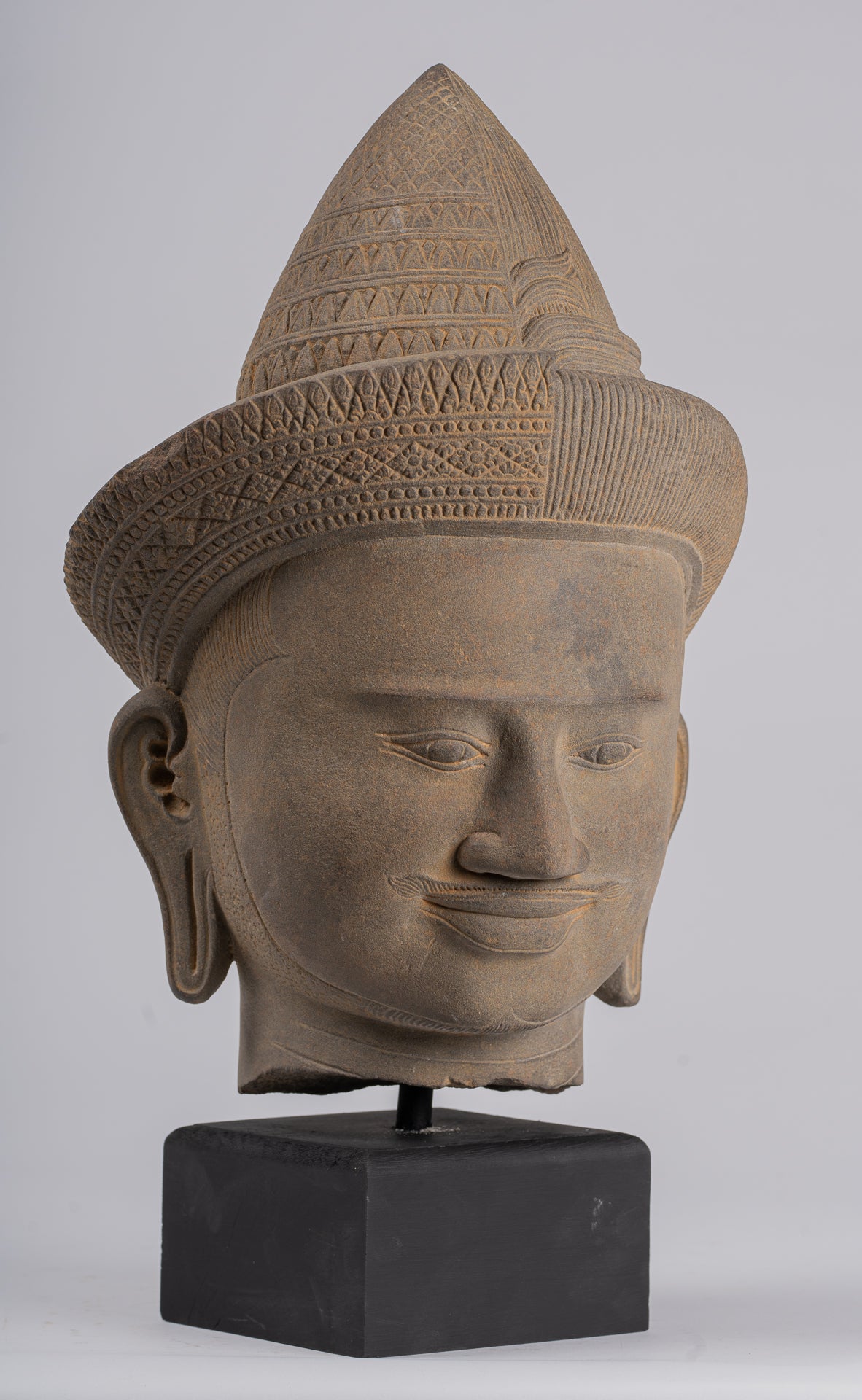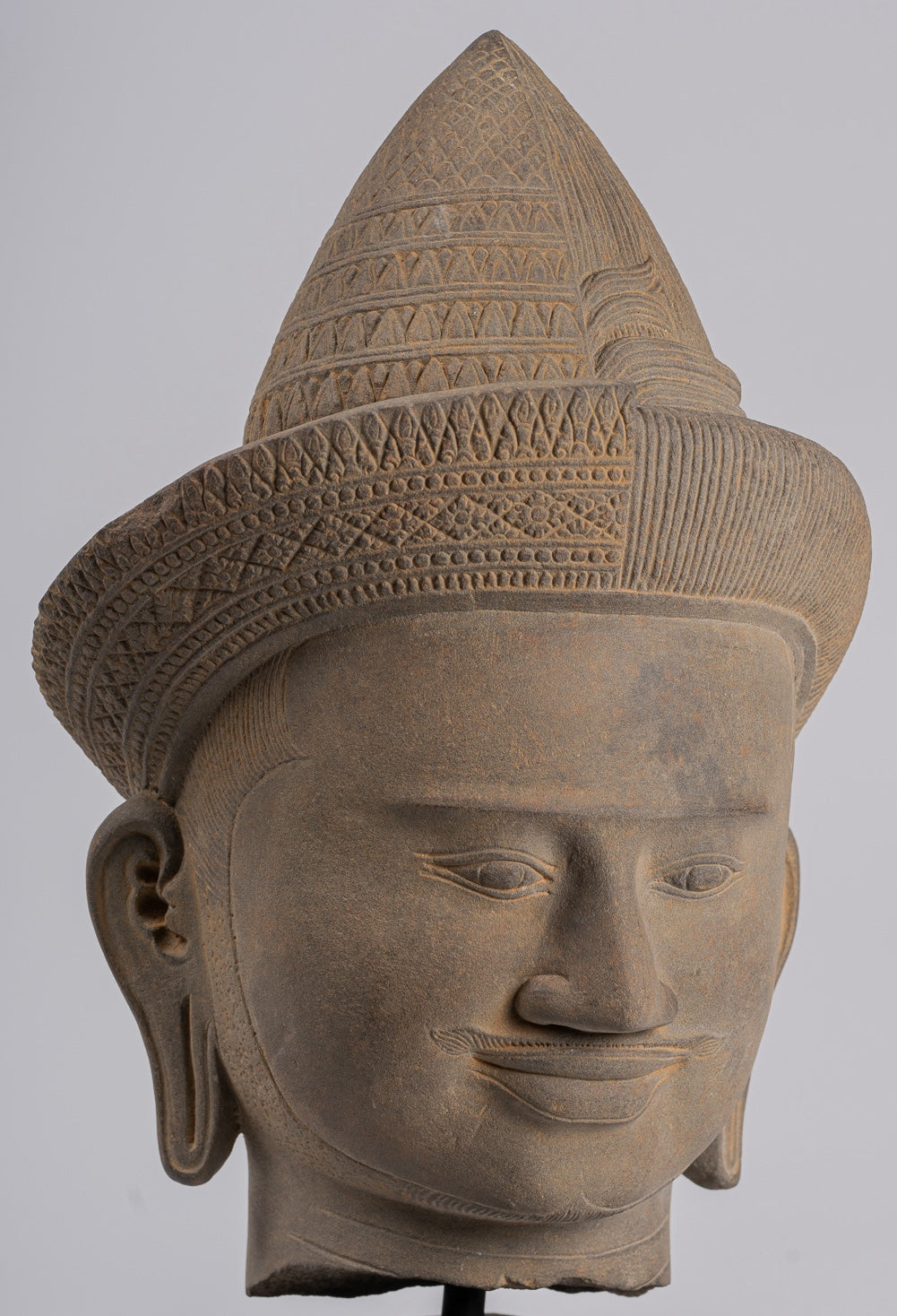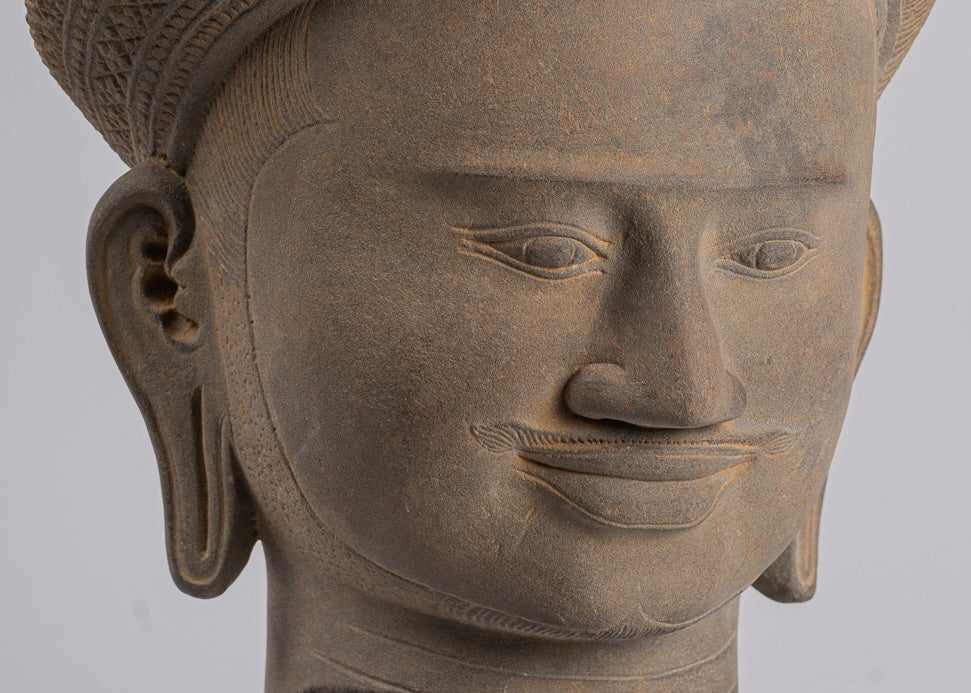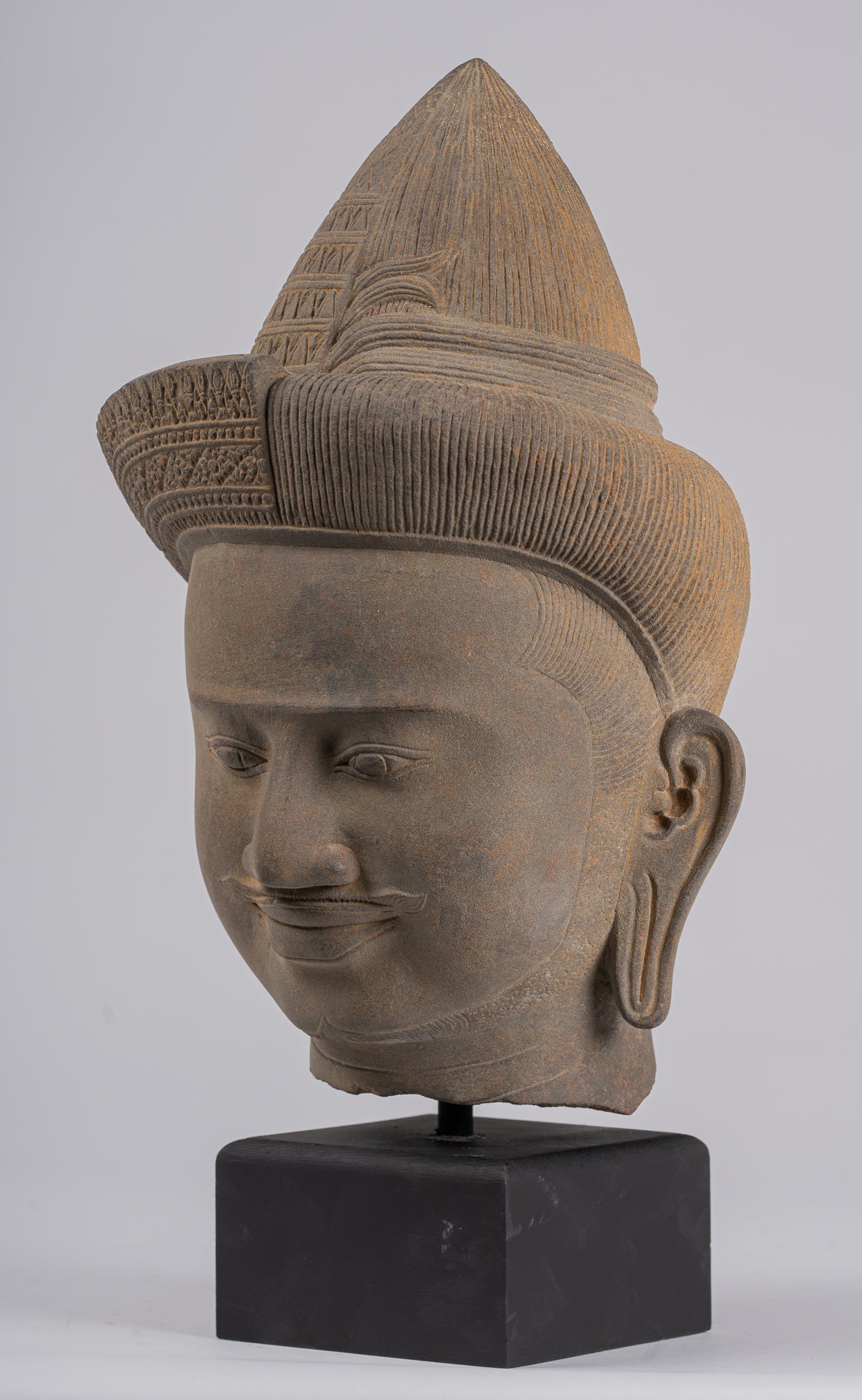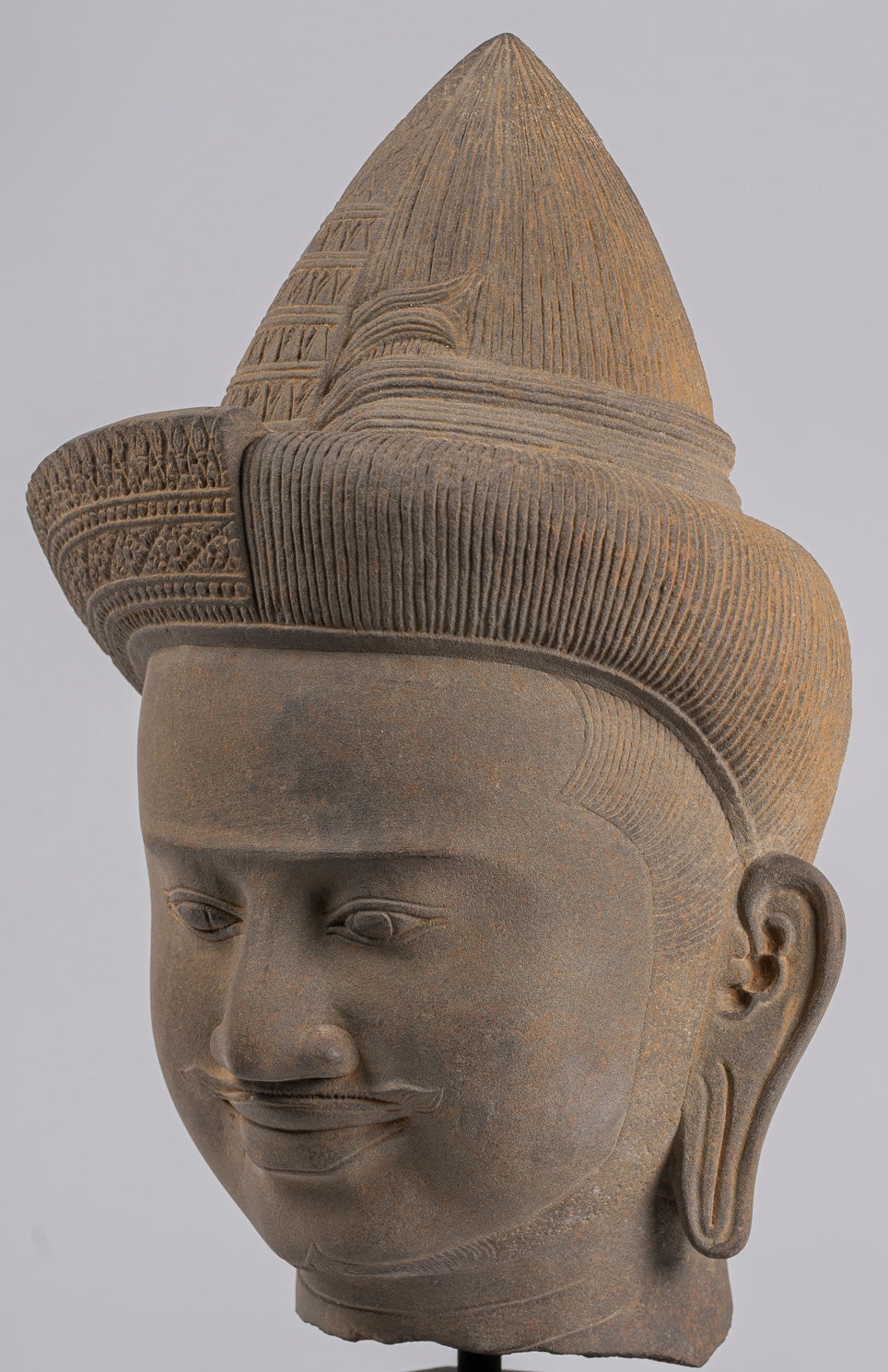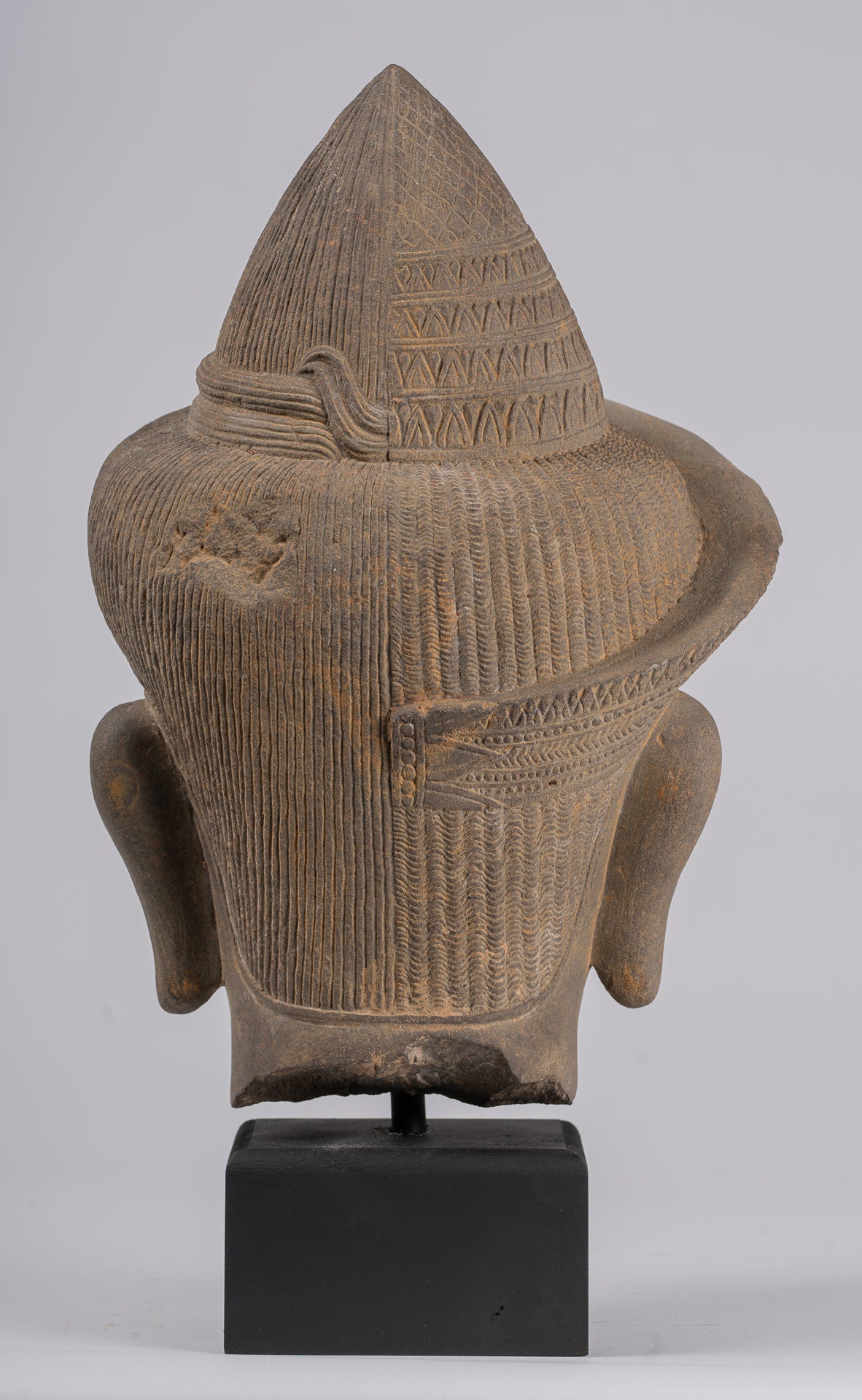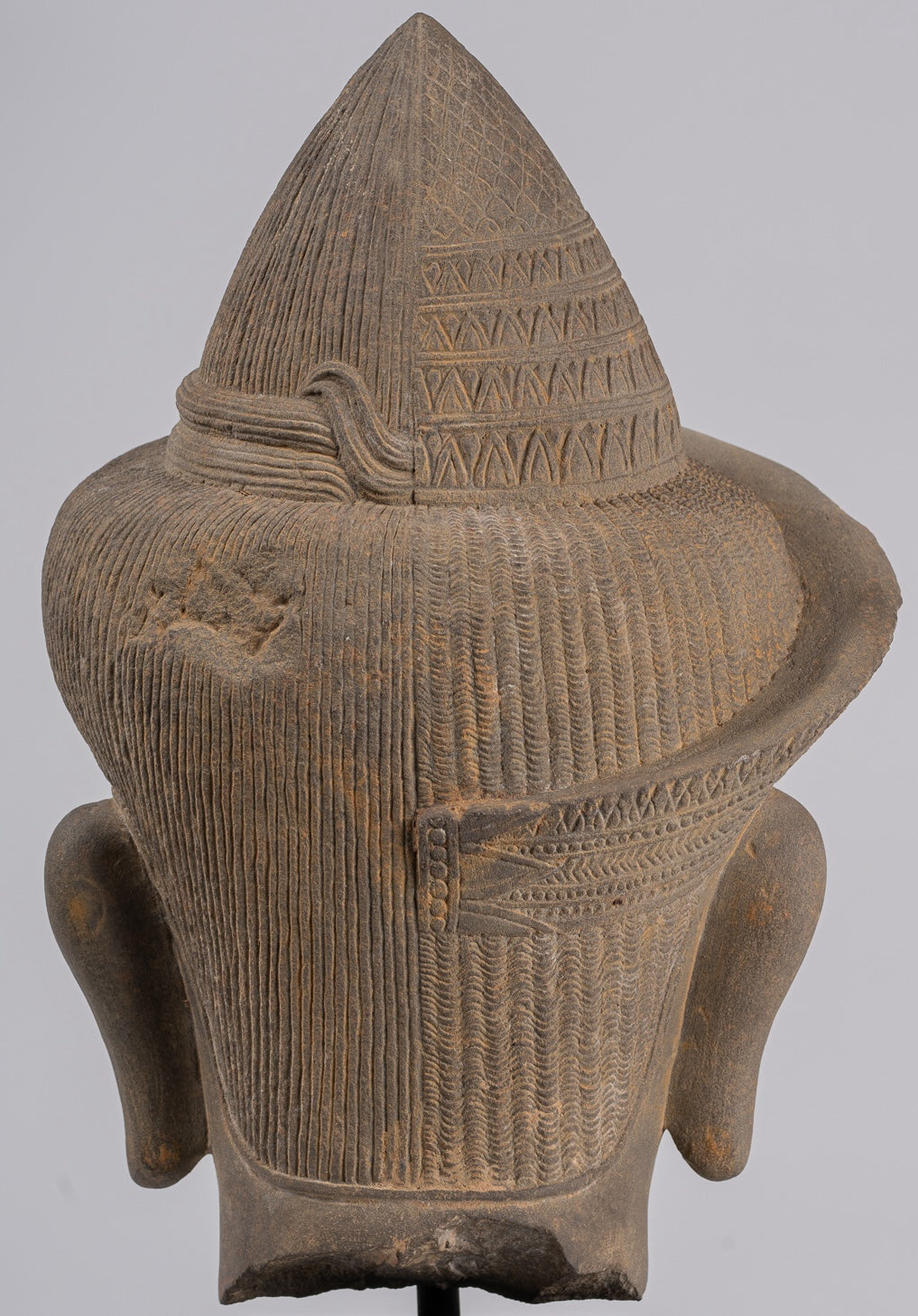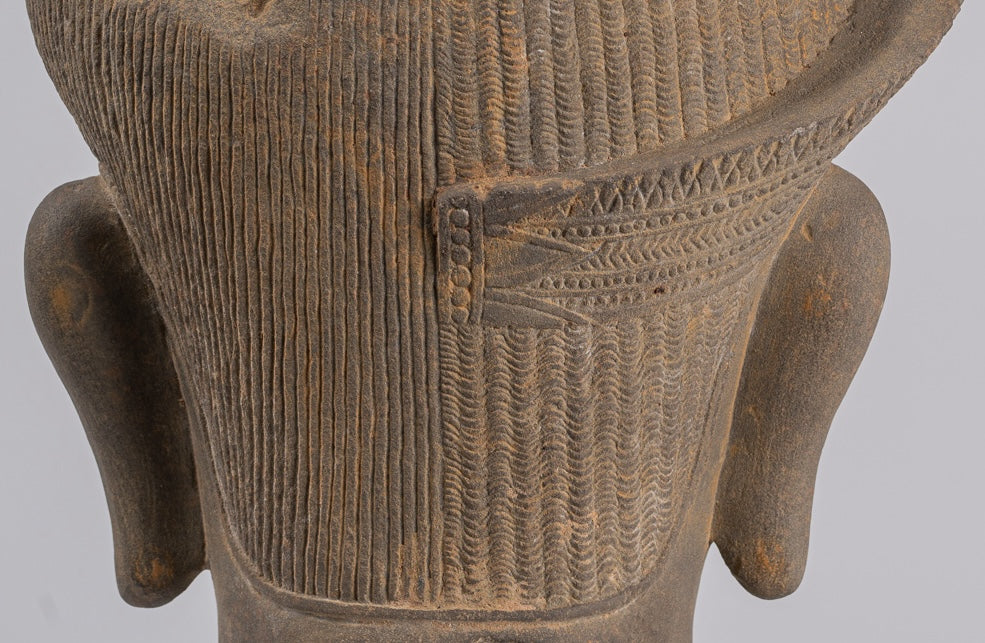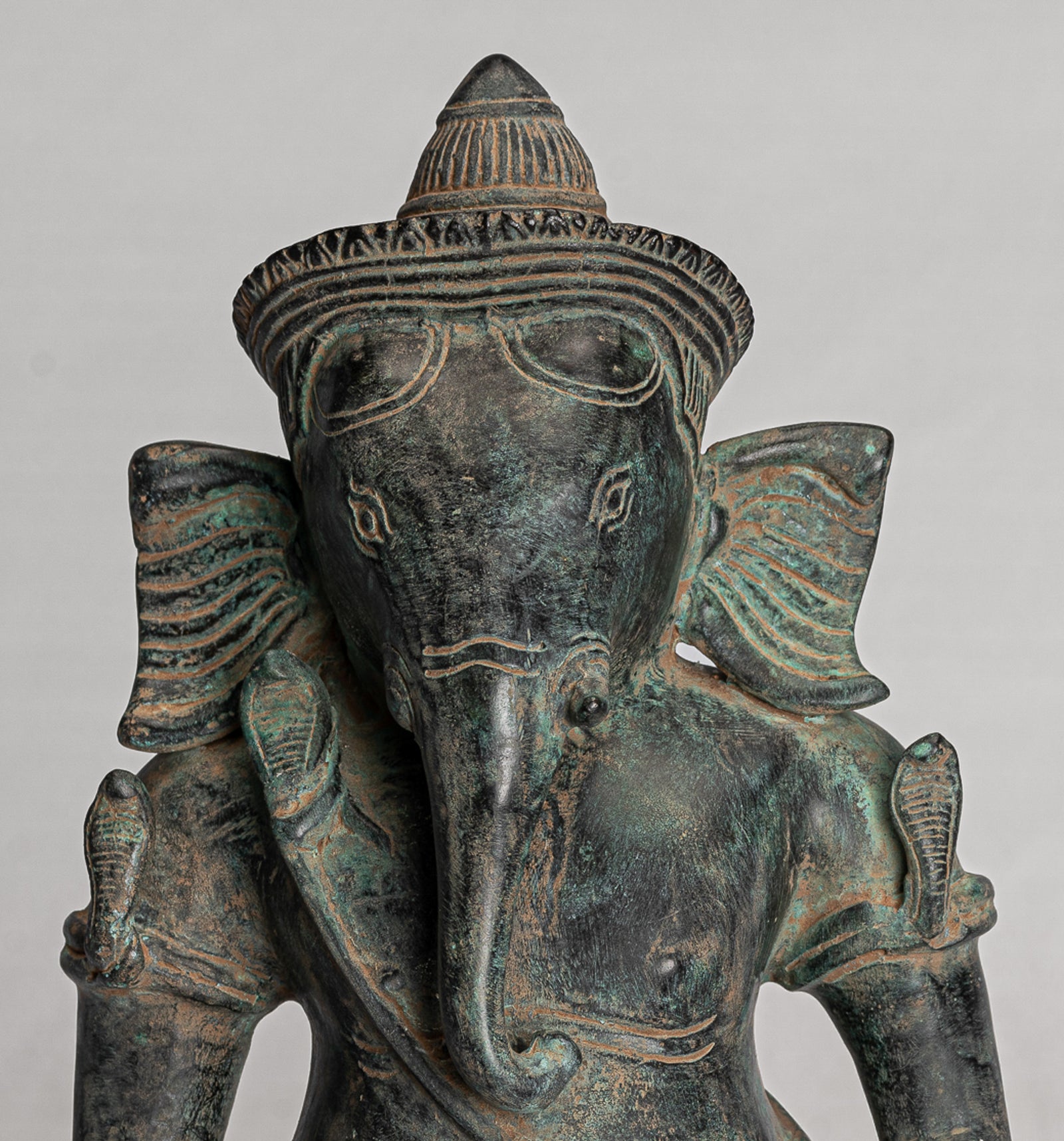-
Antique Baphuon Style Stone Mounted Khmer Vishnu Head - 43cm / 17"
Measures (Height) 43cm/17"
The power emanating from this compelling Vishnu characterises similar images, found in Cambodia and dated to the late 10th to mid-11th centuries.
The Vishnu head is unusual as it appears to reflect two Khmer styles. Mid 11th century, pre-Angkor Baphuon style and late 10th century Pre Rup style. The head has a roughly cylindrical jata (chignon), of which the Baphuon half is formed of a lotus petal motif. The lotus flower represents purity, compassion and the giving of great joy to all. The Pre Rup half appears to have two crossed thick ropes of hair at the base of a plain jata.
As is typical with the Baphuon style, the general silhouette is heavier. The carving is beautiful as you can see in the fine details of the face. Details are rendered perfectly. The features suggest the prana, or inner breath, that signifies superhuman power. The fullness of the forms give the face a softness which accentuates the eyes opened wide, and the fleshy and sensual lips. The anatomy shows a strong sense of observation.
Vishnu is the divine Hindu preserver and protector of human life, a role that provided natural analogies with earthly kingship for the Khmer. The Vishnu embodies authority with its iconic downcast gaze and large unexpressive face.
As is typical with this style the Vishnu has a soft face and high Chignon, surmounted by a lotus flower. His tiara or jatamukuta (crown of hair) is also richly decorated. A tradition that continued to develop in Cambodia from the 10th century to the post-Angkor period.
The features of Vishnu demonstrate a prominent nose, jutting, fleshy lower lip and firm chin. The eyebrow ridge is strongly horizontal and crosses the bridge of the nose. The eyes are bordered by narrow bands incised above and below. Pendulous earlobes are also typical of the period whilst the inner rims of the ears display the characteristic tripart scalloped treatment.
As with images from this period, the ornamentation reflects a perfect mastery of sculpting and fluidity. Facial features of the statue retain characteristics of the previous Banteay Srei style, but appear more delicate. Generally, the statues are small in size, but in scale with the temple, a feeling of elegance and softness is given off by the whole.
The image radiates an aloofness, the quiet power of Vishnu typical of the Baphuon period. The embodiment of beauty, grace and charm.
The Vishnu is loose mounted on a wood base (later).
To aid with safe shipping your Vishnu will be wood crated before shipping. There is no additional cost for this packing, crating and shipping service.
Provenance: Ex- private London collection.
Scholarly ReferenceThe Walters Art Gallery, 25.244 - Similarly styled Ardhanarishvara imageMusée Guimet - Similarly styled Avalokiteshvara imageSATISFACTION GUARANTEE - We have been offering SE Asian Art for many years and are proud of the reputation we have developed for fair and honest listings. However, if for any reason, whatsoever, you are unhappy with your purchase please just let us know and we will provide a full refund. We want you to be 100% happy with your purchase.
-
The majority of orders will be shipped with DHL. This is a secure, express and fully tracked service.
Items less than 2Kg we typically ship using Royal Mail.
Once we receive your order we try to ship all orders the same or next working day.
Large and/or fragile pieces requiring palletising, specialist crating and/or extra packaging may take a little longer. Palletised shipments will be delivered curbside.
All orders over 35 GBP will be shipped free of charge.

-
We genuinely hope that all purchases delight.
However, if they do not, regardless of reason, we will refund all orders upon receipt of the unwanted item. Just notify us within 14 days of receiving your order that you wish to make a return and send the piece back to us with 30 days of delivery.
The prevalence of Hindu statues in Cambodia, a Buddhist country, is a testament to the region’s historical depth and cultural adaptability.
These statues not only reflect the grandeur of the Khmer Empire but also symbolize the enduring influence of Hinduism within Cambodia’s spiritual and artistic traditions.


